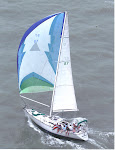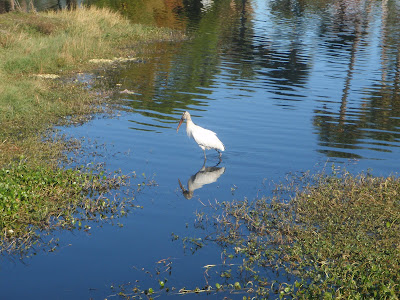


The ICW through South Carolina and Georgia is unlike the ICW in Texas, Florida or even North Carolina. This is the geography locals call the low country. Here the ICW is not a straight canal but rather a system of interlocking rivers, sloughs, sounds and oxbows connected by man made channels called cuts. These cuts have charming names such as Hells Gate, etc. All this makes for long winding routes through mostly remote marshlands. It is beautiful, but tiring. Exposed to the sea there are strong tidal currents and extreme tides. In Georgia the Corp of Engineers has abandoned dredging perhaps with good reason. With eight foot tides any boat can make it through at high tide. But do the math. In the winter season there are only 10 hours of useful daylight. On average, of course, only half of that time is above mid tide and half of that half is either ebb or flood. All of these calculations are worrisome but pointless as you just have to move along.
There are some remarkable spots along the way, however.
White Pepper left Charleston at slack water about midday to get past a tricky bridge. We could only make 30 statue miles by evening and pulled off to the side in a little creek, Tom Point. We wound our way back into the marsh through a narrow creek about 100 feet wide and 20 feet deep for a mile. When the anchor rattled down it was easy to hear banjos playing. This last comment is courtesy of our friend, Rick Bear, who also visited here. The next day we crossed the tricky Savannah River at high tide and slack water. We passed by St Bonaventure Cemetery which had such an important place in the novel,
Midnight in the Garden of Good and Evil. The iconic image of the novel is the statue of 'The Bird Girl' which spent 50 years unnoticed in the cemetery until it was pictured on the cover of the novel. Readers will be happy to know that the statue has been moved to a safe museum in downtown Savannah. Also of interest the world's first ecotourist, John Muir, camped out in this graveyard for 6 nights in 1868 waiting for funds. That night we were safe and secure night anchored in another deep narrow creek, the Herb River. This was a civilized and habitated area south of Thunderball, GA.
The Delegal Marina, in Delegal Creek on Skidaway Island, GA is in a remarkable position. Directly exposed to the Atlantic Ocean on Wasassu Sound it should be as crowded as Fort Lauderdale,etc. But with only 2 or 3 feet clearance at low tide at the entrance, an eight foot tidal range and 3 knot currents it is a formidable challenge. The marina is understandably deserted. We were visiting Rick and Suz Bear, our cruising friends. Our visit is the subject of another post--Savannah.
After leaving Delegal Creek Jan and I just could not take Georgia anymore. We did not want to hazard Wasassu Sound, but 20 statue miles further down the ICW on the Bear River is St. Catherine's Sound. I do NOT recommend this inlet, but we had perfect conditions to leave--following breeze, slack water and zero sea state. Despite all of these conditions the
White Pepper found 7.5 feet of depth 5 miles offshore just outside the entrance buoys red #1 and green #2. Very scary. I would not want to be there in severe weather.
We motor sailed south towards Florida. A head wind slowed progress, but finally about midnight the wind backed to the west as predicted. The seas flattened somewhat and we just flew along. The ride was bumpy and our crew got little sleep. We entered the St. Johns River at dawn. This is an excellent inlet--wide and well marked. Miraculously we arrived at the intersection of the ICW and St. Johns River at slack water and had an easy time with the turn. This spot is said to be one of the trickiest on the track south. The currents can run as high as four knots which is about all the old girl can handle at this stage.
After an uneventful day motoring south
White Pepper arrived in the harbor of St. Augustine, FL. The city has just recently installed a large mooring field. This is a mercy as the anchorage is notorious for being tricky with contrary wind and reversing currents. Secure; we fell asleep about 8 and slept round the clock.

















